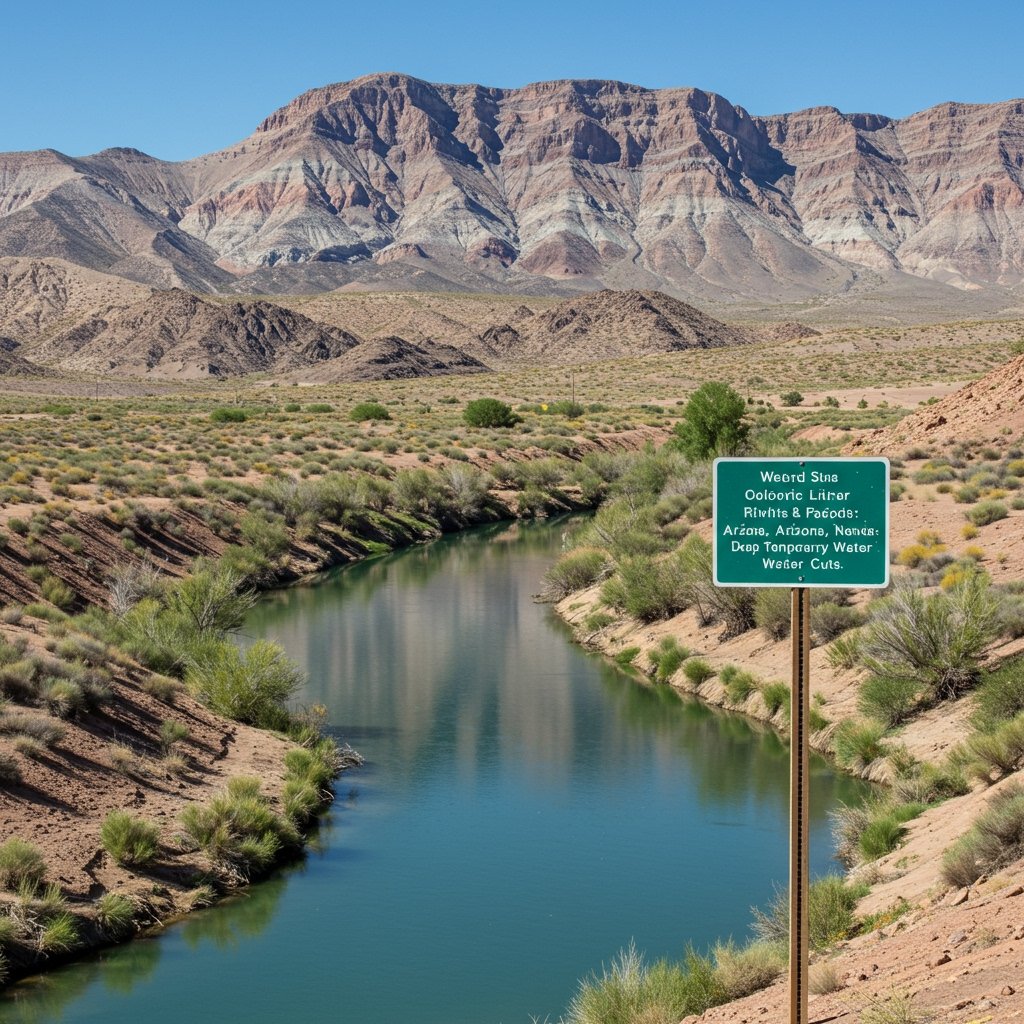Lower Basin States Forge Tentative Colorado River Water Conservation Agreement
Sacramento, Phoenix, Carson City — Representatives from the three Lower Basin states of the Colorado River — California, Arizona, and Nevada — have announced a significant step towards addressing the deepening water crisis: a tentative agreement regarding temporary cuts to their Colorado River water usage. The pact, reached after weeks of intense federal mediation facilitated by the U.S. Department of the Interior, aims to conserve approximately one million acre-feet of water annually through 2026.
This proposed measure is specifically designed to bolster critically low water levels at Lake Mead, the nation’s largest reservoir, and concurrently reduce the immediate risk of triggering future mandatory Tier 3 restrictions, which would necessitate even more severe and economically disruptive cuts for the Lower Basin states.
While celebrated as a crucial breakthrough, the agreement remains tentative. It now requires formal approval from state water agencies and legislatures in the respective state capitals: Sacramento, California; Phoenix, Arizona; and Carson City, Nevada, before it can be implemented.
Context of a River in Crisis
The Colorado River system, a vital water source for some 40 million people across seven U.S. states and parts of Mexico, has been severely strained by more than two decades of persistent drought, exacerbated by climate change. This prolonged dry spell has dramatically depleted the river’s two main reservoirs, Lake Mead and Lake Powell, which together serve as the primary storage and management infrastructure for the entire basin.
Lake Mead, impounded by Hoover Dam, has seen its water levels plummet to historic lows in recent years, nearing levels that could threaten hydropower generation and drastically curtail water deliveries to downstream users, particularly in the Lower Basin states of Arizona, California, and Nevada.
The federal government, through the Bureau of Reclamation (part of the U.S. Department of the Interior), has the authority to declare shortage conditions on the river based on Lake Mead’s elevation. These declarations trigger mandatory cutbacks, primarily affecting Arizona and Nevada under existing agreements and water priority laws. California, holding senior water rights, had largely avoided significant mandatory cuts until recently.
The severity of the situation led the U.S. Department of the Interior last year to call for unprecedented conservation efforts across the basin, seeking voluntary agreements from the states to conserve an additional two to four million acre-feet of water annually to stabilize the system.
Details of the Tentative Agreement
The tentative agreement announced by California, Arizona, and Nevada represents a collaborative effort by the Lower Basin states to proactively address the federal call for deeper cuts and share the burden of conservation. The core commitment of the pact is to conserve a combined total of approximately one million acre-feet of water annually from their respective allocations for the period extending through 2026.
This one million acre-feet target is seen as a critical contribution towards shoring up Lake Mead. While potentially less than the higher end of the federal government’s initial requests, it signifies a unified approach from the states most directly impacted by Lake Mead’s decline and holding significant water rights.
The temporary nature of the agreement, effective through 2026, acknowledges the immediate crisis while providing a defined timeframe for conservation. This period is intended to buy time, allowing reservoir levels to potentially recover somewhat if hydrology improves, and providing space for the states and federal government to negotiate longer-term solutions for managing the river in a drier future.
The conservation efforts under this pact are expected to be achieved through a combination of measures, including compensated conservation programs where water users are paid to temporarily fallow land or reduce municipal use, as well as system efficiency improvements. The specifics of how the one million acre-feet will be conserved and allocated among the states and various water users within those states will be detailed in the final framework presented for approval.
The Path to Approval and Implementation
The journey to this tentative agreement involved challenging negotiations, ultimately requiring weeks of intensive federal mediation facilitated by officials from the U.S. Department of the Interior. The process highlighted the complex and often competing interests among agricultural users, municipalities, and environmental concerns within and between the states.
With the conceptual framework now in place, the focus shifts to the approval processes within each state. This involves gaining endorsement from state water agencies, which oversee water rights and management, and securing legislative approval in Sacramento, Phoenix, and Carson City. These legislative bodies will need to review the terms, potential impacts, and funding mechanisms required to support the conservation efforts outlined in the pact.
The need for approval in three separate state capitals underscores the decentralized nature of water governance in the U.S. and the political hurdles involved in implementing major interstate water agreements. A failure to secure approval in any one state could jeopardize the entire tentative pact.
If approved, the framework will guide water management decisions and conservation programs in the Lower Basin for the next three years, contributing significantly to the effort to stabilize the Colorado River system during a period of unprecedented challenge. The outcome of the state approval processes will be closely watched by water managers, policymakers, and stakeholders across the entire Colorado River Basin.



















